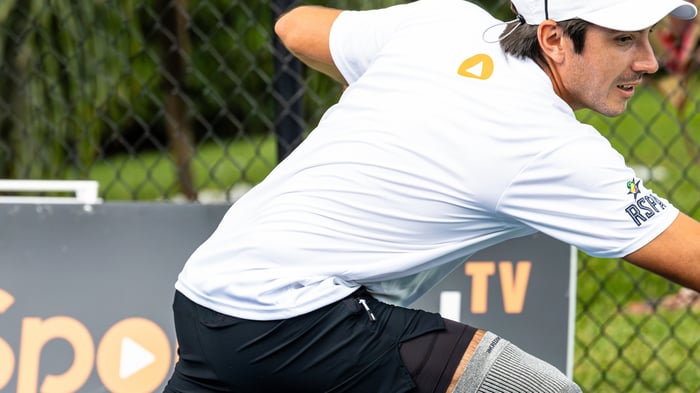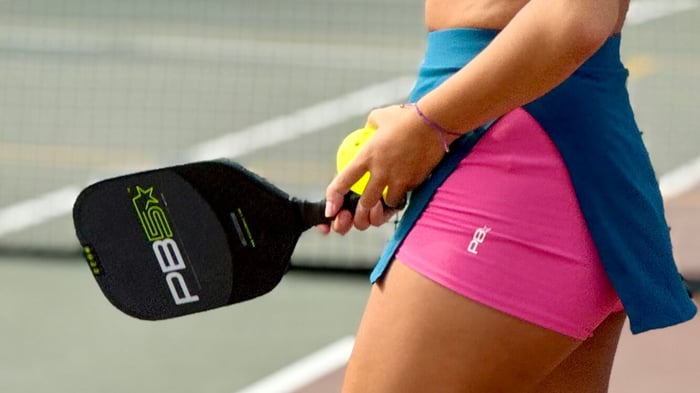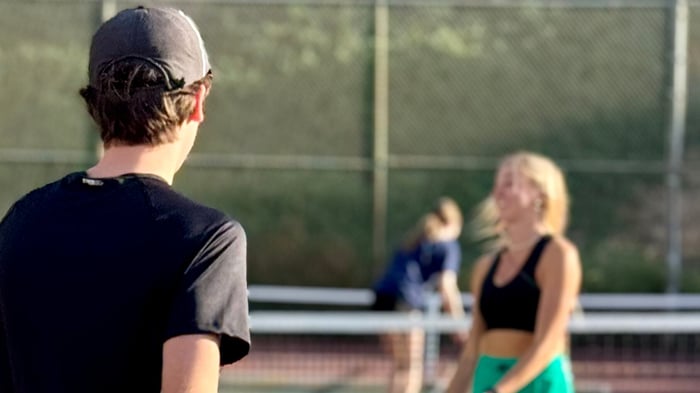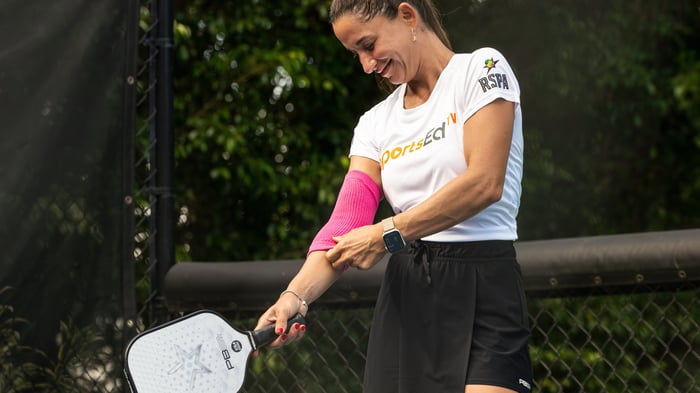Key takeaways:
Confidence in pickleball is a skill that can be developed through mental training techniques like visualization, positive self-talk, and pressure-point practice.
Integrating mental strategies with physical drills creates a complete training routine that prepares players for high-pressure moments and sustained improvement.
Structured warm-ups, partner communication drills, and match simulations are essential for building mental resilience, consistency, and teamwork on the court.
In tight moments, when the score is even and the pressure is on, the difference between good players and great ones often comes down to mindset. It’s not just about your footwork or your backhand; it’s about how well you manage the mental side of the game. While many players spend hours perfecting their mechanics, they often overlook the psychological skills that can influence everything from decision-making to recovery after a missed shot. Confidence becomes the key ingredient, especially when you're trying to close out a match or hold your ground against a tough opponent.
The best players know that confidence isn’t something you either have or don’t; it’s something you build. Through intentional practice, it becomes just as trainable as your serve or your volley. Mental strategies like visualization, controlled breathing, and focused pressure drills help prepare your mind to stay calm and sharp in high-stakes moments. When combined with physical training, these techniques create a complete performance mindset. And just as your mindset fuels your confidence, the right gear supports it. PB5star’s performance apparel is made to move with you and help you feel your best every time you step on the court.
In the next section, we’ll break down specific confidence-building drills and techniques that help you stay focused, composed, and competitive, no matter what the scoreboard says.
Practice drills to build confidence on the court
Confidence isn't just something you hope to feel during a match. It's something you build every time you practice with intention. The drills in this section are designed to help you train your body and your mindset at the same time, so you're not just technically prepared, you're mentally ready too. Whether you're new to competitive play or looking to fine-tune your mental game, these confidence-building strategies give you tools you can rely on when the pressure hits.
#1. Start strong with dynamic pickleball warm-up routines
Confidence begins before the first serve, and that means starting each session with a purposeful warm-up. A well-designed dynamic warm-up prepares your muscles, increases your heart rate, and shifts your brain into performance mode. Unlike static stretching, which can actually decrease your readiness for explosive movements, dynamic warm-ups use full-body movements like forward lunges with rotation, lateral lunges, and high knee skips to engage the same muscles you'll rely on during play.
Incorporate light paddle work to get your coordination and timing in sync. Shadow swings, soft volleys, and quick footwork drills activate your neural pathways and sharpen your reflexes. This type of preparation improves reaction time, boosts confidence, and helps prevent injury. When your warm-up becomes a consistent ritual, it also builds mental readiness by signaling to your brain that it's time to focus. Over time, this routine will create a feeling of control that carries into every match, helping you feel calm, collected, and ready to compete.
#2. Build focus with positive self-talk for pickleball
Your internal voice has more power than you think. The way you speak to yourself between points, after errors, and during key moments can lift you up or drag you down. Positive self-talk isn't just feel-good fluff; it's a practical mental skill that keeps you grounded and focused. It gives your brain direction and keeps your thoughts aligned with your goals.
Create personalized reset phrases that you can use after errors, such as "next point" or "trust the process," to quickly shift your focus from what went wrong to what you need to do next.
Develop pre-serve affirmations that reinforce your strengths and preparation, like "I've practiced this serve a thousand times" or "my placement is on target today."
Use tactical self-talk during rallies to stay present and strategic, reminding yourself of specific game plans like "move them wide" or "attack the middle."
Practice positive reframing when facing challenging opponents or situations, turning "they're too good" into "this is a great opportunity to test my skills."
Build confidence anchors by mentally reviewing recent successful shots or matches before stepping up to serve, creating a foundation of proven performance to draw from.
Integrate breathing cues with your self-talk, combining phrases like "stay calm" with deep breaths to create a complete mental reset routine between points.
#3. Sharpen your edge with pressure point practice
Even the most skilled players can fall apart under pressure if they haven’t trained for it. That’s where pressure-point drills come in. These scenarios simulate match-like tension and help condition your body and mind to respond calmly and decisively. Practice high-stakes moments by setting up drills where you must win three points in a row or come back from a mock deficit, like being “down 9-10.” This helps you learn how to manage nerves, make smart decisions, and build anticipation skills.
Add intensity with score-based or timed challenges. For example, set a timer for a 30-second rally where you have to maintain a dink exchange without errors. Or challenge yourself to complete a sequence of third-shot drops under time constraints. These drills improve focus, mental resilience, and your ability to execute under pressure. Start with lower-stakes versions and gradually increase difficulty as your comfort level improves. When you consistently train under simulated pressure, real match tension feels more manageable, and you’ll be better equipped to play your best when it matters most.
#4. Visualize success with guided visualization techniques
Confidence often starts in the mind. Visualization is one of the most effective ways to mentally prepare for high-pressure situations before you even step on the court. By mentally rehearsing specific movements and match scenarios, you're training your brain to expect success and handle tough moments with calm focus. These mental reps help reinforce your physical skills and boost your confidence when the game is on the line.
Create detailed pre-match visualizations where you see yourself hitting clean serves, staying composed under pressure, and winning key rallies.
Picture specific scenarios like coming back from a score deficit or closing out a tight game to build readiness for similar real-life moments.
Use between-point imagery to reset during matches; quickly visualize your next shot or strategy to stay focused and positive.
Focus on technique during mental practice by visualizing smooth, controlled execution of shots like third-shot drops or overhead smashes.
Combine visualization with breathing exercises to reinforce calmness and sharpen mental clarity during match play.
Build a mental “highlight reel” by replaying your best plays after each practice session, giving your brain familiar, positive memories to draw from when confidence is needed most.
#5. Strengthen teamwork with partner communication drills
Doubles success isn’t just about skill; it’s about chemistry. Great teams move and think as one, and that connection is built through intentional communication. Practicing clear, simple cues like “mine,” “switch,” and “yours” reduces hesitation and helps avoid confusion during fast-paced points. The more you and your partner practice these calls, the more natural they become during real matches.
Go further by incorporating movement drills where you practice switching positions or poaching. For example, set up rallies where the net player announces their intention to intercept, and the baseline partner adjusts. After each drill, take a moment to discuss what worked and where communication could improve. This regular feedback helps build trust and gives each player a clearer understanding of their role. The more aligned you are with your partner, the more confident you’ll feel going into any match, knowing you’ve got each other’s back.
#6. Master composure with focus and breathing exercises
When your heart is pounding and your palms are sweaty, the ability to manage your body’s stress response is essential. That’s where breathing and focus techniques come into play. Something as simple as box breathing, inhale for four counts, hold for four, exhale for four, hold again for four, can quickly lower your heart rate and sharpen your focus.
Create a pre-serve routine that includes two or three deep breaths, paired with a specific intention like “place it deep” or “stay relaxed.” During rallies, try exhaling as you strike the ball to maintain rhythm and stay loose. Between games or during changeovers, ground yourself in the present moment by focusing on the feel of your grip or the sound of your breath. Over time, these techniques train your nervous system to respond with calm instead of panic. The more you practice this kind of mental control, the more it will feel automatic when things get intense.
#7. Simulate real matches with match simulation drills
One of the best ways to build confidence is to put your skills to the test in realistic, low-stakes match simulations. These drills mimic tournament pressure and give you the chance to apply your strategies in a more competitive setting. Whether it’s playing a full game with mock scoring or recreating a tiebreak scenario, these sessions help prepare your brain and body for real match tension.
Track specific goals during these drills, like serve accuracy under pressure or third-shot drop success rates. Keep a log of how often you win when trailing or how many forced errors you generate. This kind of reflection helps you identify patterns in your performance and build on what’s working. By repeatedly exposing yourself to match-like situations, you train your mind to stay composed and make smart choices when the pressure is real. Confidence builds every time you navigate these moments successfully in practice.
#8. Build consistency and resilience through repetition
Confidence thrives on repetition. When you know you’ve hit a shot hundreds of times in practice, it’s much easier to trust it under pressure. Repetition reinforces muscle memory, sharpens timing, and removes hesitation. Whether you're working on your serve, your reset, or your volley, consistent, targeted practice helps transform your weakest skills into reliable strengths.
Start by focusing on one or two key shots per session. Spend 10 to 15 minutes hitting nothing but third-shot drops or deep serves, tracking your success rate along the way. Gradually add difficulty, include movement, simulate match pace, or create pressure scenarios. Keep a practice journal to track improvements and identify areas for growth. Incorporate moments of intentional challenge, like drills that require completing a task while tired or after a mistake. These moments of struggle are where mental resilience grows, preparing you for the highs and lows of real match play.
Frequently asked questions about pickleball confidence drills
When you're pushing to reach the next competitive level, questions about mental training implementation become just as important as perfecting your third-shot drop. These frequently asked pickleball confidence tips address the strategic concerns that arise when you're ready to gain a psychological edge over your opponents.
What are the best ways to recover from mistakes during a match?
The most effective recovery strategy combines immediate reset techniques with longer-term mental resilience building. Use controlled breathing and a brief positive self-talk phrase like "next point" to quickly shift your focus from the error to your upcoming opportunity. Establishing consistent routines between points helps maintain your mental rhythm and prevents mistakes from compounding into larger performance issues.
Can these drills help players at all skill levels?
Mental training techniques adapt effectively to players across the competitive spectrum because confidence challenges exist at every level of play. Beginner competitors benefit from basic breathing exercises and positive self-talk to manage match nerves, while advanced players can use sophisticated visualization and pressure simulation to fine-tune their mental edge. The key is matching the complexity of mental techniques to your current skill level and competitive experience.
How do I incorporate mental training into my physical practice?
The most successful approach integrates mental techniques into your existing physical drills rather than treating them as separate activities. Practice positive self-talk during repetitive shot drills, use visualization techniques during rest periods between sets, and integrate breathing exercises into your warm-up and cool-down routines. This integration ensures that mental skills become as automatic as your physical movements when you need them during matches.
Join the PB5star community
Confidence isn’t just a mindset; it becomes a true competitive edge when it’s built on smart mental strategies, consistent training, and the support of a like-minded community. The drills and techniques in this guide work because they focus on both the physical and psychological sides of the game. When you regularly practice visualization, breathing exercises, pressure-point scenarios, and partner communication, you're not just getting better at individual skills. You’re developing the kind of mental toughness that holds up under pressure and helps you perform your best when it matters most.
That journey gets even more rewarding when you're equipped with the right gear and surrounded by players who share your drive. Our performance-focused apparel and PB5 Court2 shoes are built to move with you through every quick pivot and high-stakes rally, helping you stay locked in and distraction-free. But more importantly, PB5star is a place to connect with others who are on the same path. Share your favorite mental training tips, swap confidence-building drills, and support each other through every breakthrough, because the fastest way to grow on and off the court is with a community that believes in showing up, improving, and playing with purpose.







